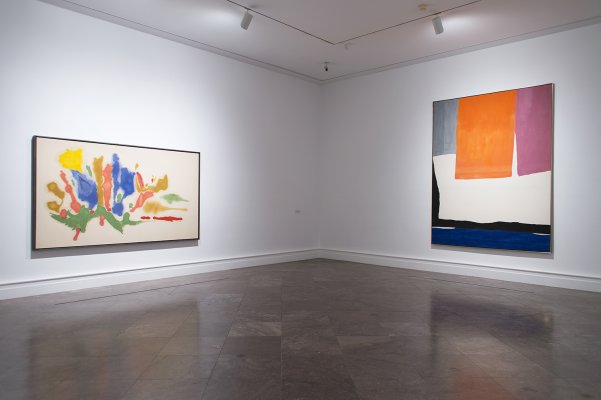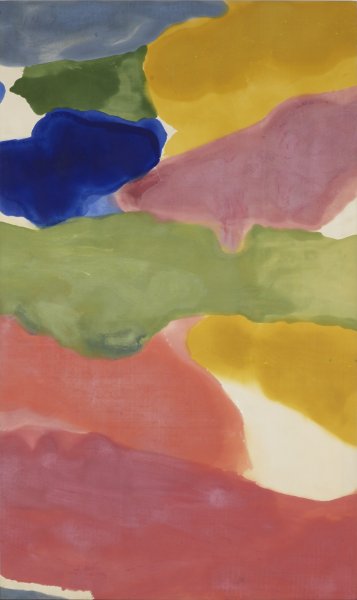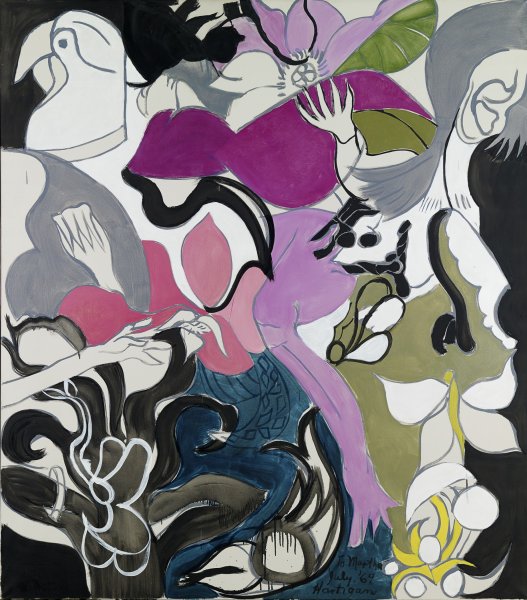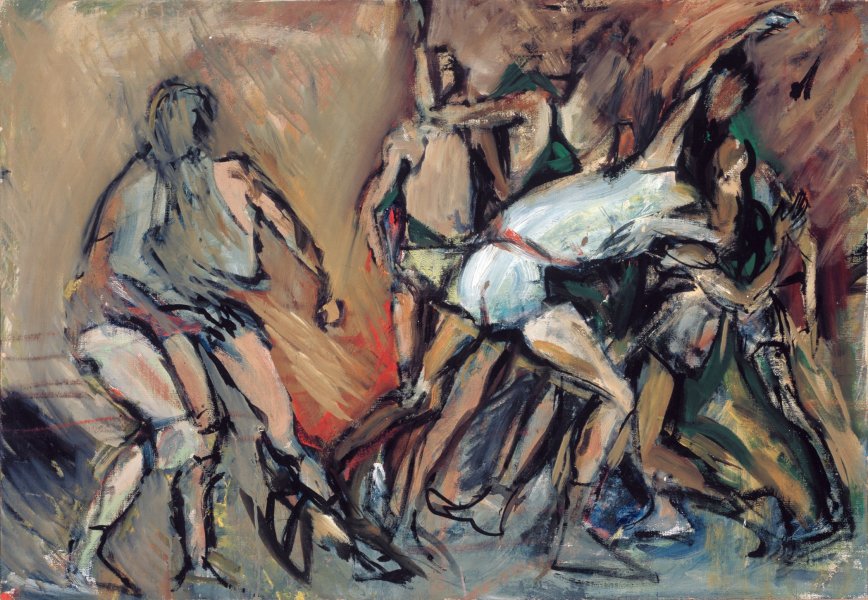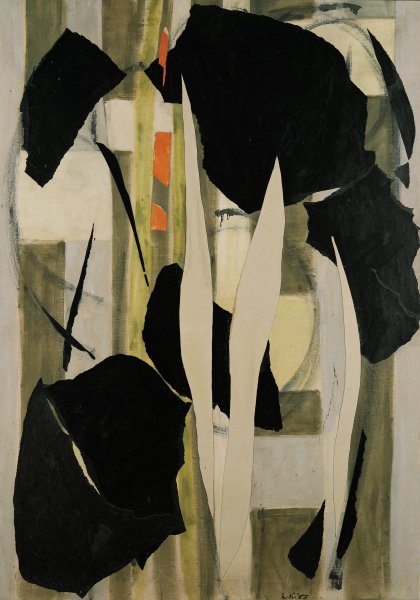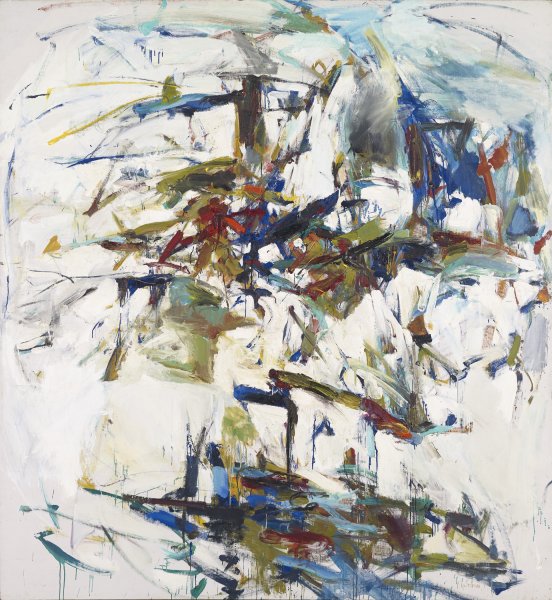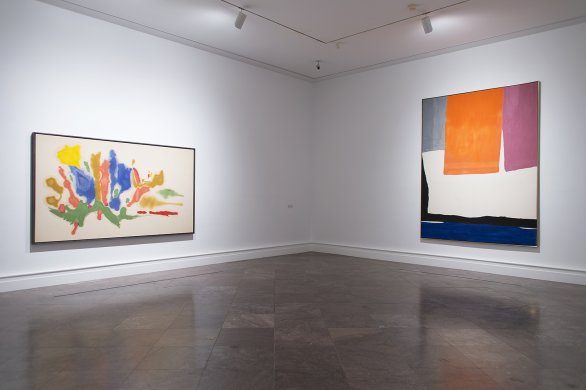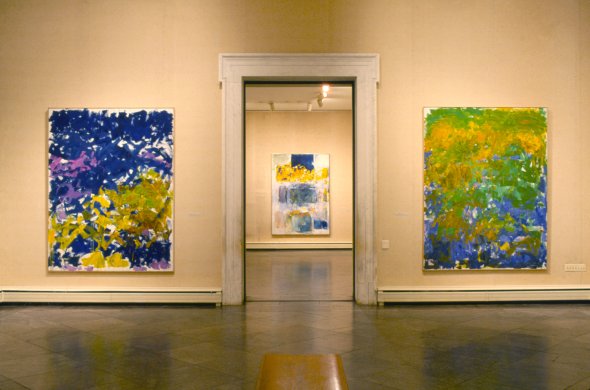On the occasion of Women’s History Month, and in conjunction with the National Museum of Women in the Arts’ fifth annual #5WomenArtists campaign, we're highlighting five women artists associated with the Albright-Knox each week this month. Today we focus on the five New York–based artists featured in Mary Gabriel's book Ninth Street Women, all of whom have works in the Albright-Knox's collection.
Helen Frankenthaler's Tutti-Fruitti is, in fact, named after the multi-fruit-mix-up ice cream or candy flavor. Frankenthaler thought the term appropriate to the work’s brightly hued “well-ordered collisions” of thinned acrylic paint. Tutti-Fruitti is an example of what became Frankenthaler’s signature method of pouring paint directly on to her canvases to create luminous fields of stained-in color.
Grace Hartigan painted When the Raven Was White as a memorial to her friend and dealer, Martha Jackson, who supported the artist’s then-unfashionable choice to work with representational imagery. Hartigan explained that “the title refers to the old myth that the raven once was white, and displeased the gods, who turned the bird black forever.” The white bird in the upper-left corner is likely a portrait of Jackson’s beloved pet parrot, Chuckie.
Scrimmage is part of a larger series of loosely painted compositions of basketball players in action that Elaine de Kooning periodically worked on beginning in the late 1940s. Although de Kooning was close with many of the era’s leading Abstract Expressionists, she maintained an interest in dynamically fusing abstract and representational forms in her own practice. In addition to her work as a painter and art educator, de Kooning was also a respected writer and critic.
Lee Krasner reused fragments of earlier paintings and works on paper to create her collage Milkweed. In 1953, Krasner, always her own worst critic, decided that she “hated” everything in her studio, “took it down, tore everything and threw it on the floor.” With the benefit of a couple weeks’ time, the remnants “began to interest me, and I started collaging.” Krasner saw all her abstractions as nevertheless deeply biographical and thought of collages like Milkweed as “recycling of the self in some form.”
Joan Mitchell’s abstract paintings are rooted in the people, places, and experiences that made up her life. In order to find inspiration, the artist had to “get into a situation where I feel something, and where I love something, and it was George. . . . We used to go swimming together.” George was Mitchell’s beloved standard poodle, who passed away in 1954. Mitchell suggested that the cool colors in George Went Swimming at Barnes Hole, but It Got Too Cold reflected both her memory of the blue tints in George’s fur as well as her grief at his passing.
